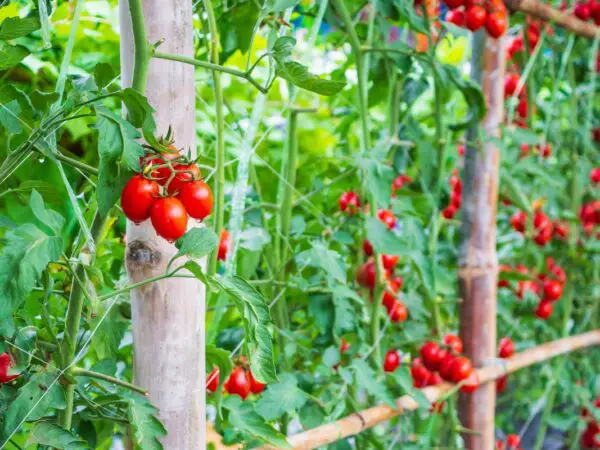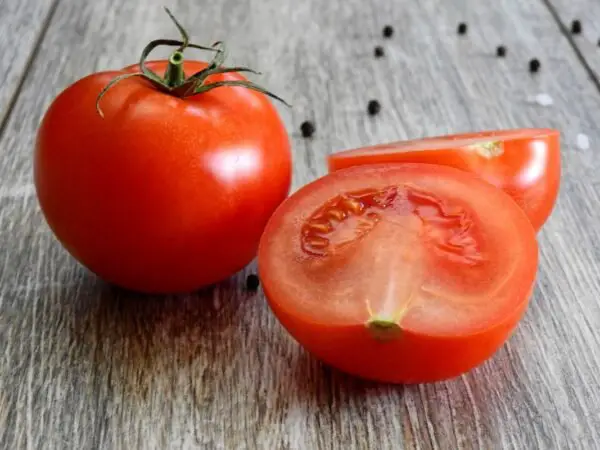Identifying the Culprit: Signs of Tomato Damage
Tomato plants can be susceptible to a variety of damages caused by pests and critters. It is essential for gardeners to be able to identify the signs of tomato damage so that appropriate measures can be taken in a timely manner. One common indicator of tomato damage is the presence of holes or ragged edges on the leaves. Pests such as caterpillars, slugs, and cutworms can often be the culprits behind this type of damage. Additionally, if you notice the fruits on your tomato plants being partially eaten or showing signs of rotting, it is likely that you are dealing with tomato-loving pests.
Another noticeable sign of tomato damage is the appearance of chewed or frayed stems. This damage can be caused by various pests, including rabbits, deer, or even larger animals such as raccoons or squirrels. In some cases, you may also find whole tomato plants completely uprooted or showing signs of being trampled. These visible signs of destruction can indicate the presence of larger animals that are attracted to the taste and fragrance of tomatoes. It is crucial to identify the specific signs of damage to effectively pinpoint the culprits and implement appropriate measures to protect your tomato plants.
• Holes or ragged edges on the leaves
• Partially eaten or rotting fruits
• Chewed or frayed stems
• Uprooted or trampled tomato plants
Common Tomato Pests: A Closer Look at Potential Culprits
Tomatoes are a beloved and popular vegetable in countless gardens and farms around the world. Unfortunately, they are also a favorite target of numerous pests that can wreak havoc on tomato plants and disrupt their growth. These pests range from small insects to larger animals, all with an insatiable appetite for tomato plants. It is important for tomato growers to be aware of these potential culprits and their telltale signs to better protect their crops.
One common culprit in tomato damage is the notorious cutworm. These sneaky larvae are usually found in the soil around young tomato plants. Cutworms get their name from their destructive behavior of cutting through the stems of seedlings. This results in the plants wilting and ultimately dying off. Signs of cutworm damage include seedlings that suddenly collapse, as well as stems that appear severed. It is crucial to identify these pests early and take preventive measures to protect your tomato plants.
The Telltale Signs of Slug Infestation on Tomato Plants
If your tomato plants are displaying unusual damage, there is a good chance that slugs may be the culprit. Slugs are common garden pests that love to feast on tender plant foliage, including tomato leaves. One telltale sign of slug infestation is the presence of irregular holes in the leaves, often with a slimy residue left behind. You may also notice silvery trails or slime trails on the leaves or on the ground around your tomato plants. Slugs are most active during nighttime and in damp conditions, so if you spot these signs, it's important to act promptly to prevent further damage.
Additionally, another clear indication of slug infestation on tomato plants is the presence of partially eaten or damaged fruits. Slugs are known to feed on the ripe tomatoes, leaving behind shallow, irregular scars or holes. If you notice damaged fruits that seem to have been partially devoured, it's likely that slugs have been feasting on your tomato harvest. To confirm slug activity, you can inspect the plants during the early morning or in the evening with the help of a flashlight, as slugs tend to be more active at these times. Identifying the telltale signs of slug infestation is the first step in successfully managing this pest and protecting your precious tomato plants.
Uncovering the Role of Cutworms in Tomato Damage
Cutworms, often considered a silent culprit in the world of tomato damage, can wreak havoc on your precious plants. These pests are actually the larvae of various species of moths and can be found in many gardens across the country. They are mostly active at night and tend to hide during the day in the soil near the base of the plants.
One of the telltale signs of a cutworm infestation is finding young tomato plants wilting and suddenly dropping over, as if they have been cut at the base. This is because cutworms have a habit of chewing through the stems of plants near the ground level, leading to their sudden demise. These voracious pests can also cause damage to leaves, fruits, and flowers, leaving your tomato plants vulnerable and stunted in their growth.
Investigating the Impact of Tomato Hornworms on Nighttime Feeding
Tomato hornworms, the larvae of a large moth species known as Manduca quinquemaculata, are notorious pests that can cause significant damage to tomato plants. These chubby green caterpillars have a voracious appetite and are particularly active during the nighttime hours. As nocturnal feeders, they can quickly devour tomato leaves and even the fruit if left unchecked.
One of the telltale signs of tomato hornworm infestation is the presence of stripped leaves on tomato plants. These caterpillars have a strong preference for tomato foliage and will devour it with gusto. Additionally, their large size and green coloration make them easy to spot on the plants during the day. However, as they tend to hide in the soil or under plant debris during daylight hours, their nocturnal feeding habits often go unnoticed until the damage becomes apparent.
Understanding the Behavior of Raccoons and Their Attraction to Tomatoes
Raccoons have long been notorious for their mischievous behavior and knack for raiding gardens, and tomato plants are no exception to their culinary interests. These clever creatures are attracted to tomatoes for several reasons. Firstly, the juicy and flavorful fruits are highly appealing to their taste buds. Raccoons are omnivores and have a varied diet, but they have an innate preference for sweet and rich foods, making tomatoes an irresistible treat.
In addition to their delectable taste, the distinctive aroma of ripening tomatoes can act as a beacon for raccoons. Raccoons have a keen olfactory sense and can detect the scent of tomatoes from afar. The strong aroma can pique their curiosity and draw them towards the source of the smell. Once they find their way to tomato plants, raccoons are known for their dexterous paws, which allow them to pluck the fruits off the vine with relative ease. This combination of taste and scent, along with their agile nature, makes tomatoes an attractive target for raccoons seeking a midnight snack.
The Role of Squirrels in Nighttime Tomato Consumption
Squirrels, those nimble and agile creatures that frolic among the trees, can often be seen as innocent and harmless. However, when it comes to tomato plants, their innocent facade quickly fades away. Squirrels have been known to be quite the culprits when it comes to nighttime tomato consumption. Under the cover of darkness, these crafty rodents sneak into gardens and feast upon the succulent, ripe fruits that have taken days or even weeks to grow.
The role of squirrels in nighttime tomato consumption is not to be underestimated. These furry creatures have a keen sense of smell and can detect the enticing aroma of ripe tomatoes from far away. Once they have located their desired meal, squirrels will use their sharp front teeth to break through the tomato's skin and devour the juicy flesh inside. This results in not only the loss of a precious tomato, but also in the destruction of the plant itself, as squirrels often leave behind a trail of torn and mangled leaves in their wake.
Assessing the Damage: How to Determine the Extent of Tomato Loss
Determining the extent of tomato loss can be a challenging task, but it is crucial in order to take appropriate action. One method to assess the damage is by visually inspecting the plants. Look for any signs of physical damage such as chewed leaves, missing fruit, or broken stems. Additionally, check for the presence of pests or insects that may be responsible for the damage. Examining the overall health and vigor of the plants can also provide insight into the extent of tomato loss. Wilting, discoloration, or stunted growth may indicate more severe damage.
Another way to determine the extent of tomato loss is by monitoring the yield. Keep track of the number of ripe tomatoes that are harvested on a regular basis. Compare this number to the expected yield based on previous seasons or the specific variety being grown. A significant decrease in harvest could indicate a higher level of tomato loss. Additionally, it is important to assess whether the damage is limited to certain parts of the garden or if it is widespread. This can help identify any patterns or specific areas that may require additional attention or protection measures. By carefully assessing the damage and its impact on the yield, gardeners can make informed decisions on how to prevent further loss and protect their tomato plants.
Natural Deterrents: Methods to Protect Your Tomato Plants at Night
One effective method to protect your tomato plants at night is by using physical barriers. This involves placing a mesh or netting around your plants to prevent pests from reaching them. Make sure the mesh is tightly secured to the ground to prevent pests from crawling underneath. Additionally, consider using cages or frames to support your plants and provide an extra layer of protection. These physical barriers can hinder pests such as slugs, cutworms, and even larger animals like raccoons from accessing your tomato plants.
Another natural deterrent to consider is the use of companion planting. Certain plants, when grown alongside tomatoes, can repel pests and protect your crops. For example, marigolds are known to deter insects like aphids and nematodes. Planting marigolds in close proximity to your tomato plants can help keep these pests at bay. Similarly, herbs such as basil, parsley, and mint have strong scents that can repel certain pests. By intercropping herbs with your tomatoes, you create a natural barrier against pests and enhance the overall health of your plants.
Expert Tips: Preventing Tomato Damage and Promoting Successful Harvests
As we strive to protect our tomato plants and ensure a successful harvest, it is important to implement some expert tips to prevent tomato damage. One effective method is to regularly inspect the plants and remove any pests that may have started to feed on them. By regularly checking for signs of infestation such as holes, wilting leaves, or discolored spots, we can catch the culprits early and take appropriate action.
Another preventive measure is to provide proper spacing between tomato plants. This not only allows for proper air circulation but also reduces the risk of disease transmission. When plants are placed too close together, it creates a favorable environment for pests and diseases to spread easily. By maintaining adequate spacing, we promote healthier plants and decrease the chances of damage.
How do I identify tomato damage?
Tomato damage can be identified by various signs, such as holes or bite marks on the leaves, fruits, or stems. Wilting or yellowing of the plant can also indicate damage.
What are some common tomato pests that cause damage?
Common tomato pests include slugs, cutworms, tomato hornworms, raccoons, and squirrels. These pests can cause various types of damage to tomato plants.
How can I identify a slug infestation on my tomato plants?
Slugs leave a slimy trail behind them and typically feed during the night. You may notice holes or irregular chew marks on the leaves or fruits of your tomato plants.
What role do cutworms play in tomato damage?
Cutworms are nocturnal pests that cut through the stems of tomato plants near ground level, causing the plants to wilt and eventually die. They can be identified by their caterpillar-like appearance.
How do tomato hornworms impact tomatoes during nighttime feeding?
Tomato hornworms are large, green caterpillars that feed on tomato plants during the night. They can devour the leaves and fruits, causing significant damage to the plant.
Why are raccoons attracted to tomatoes?
Raccoons are attracted to the scent and taste of ripe tomatoes. They can cause damage by eating the fruits or knocking them off the plants.
What role do squirrels play in nighttime tomato consumption?
Squirrels are known to be opportunistic feeders and may consume ripe tomatoes during the night. They can cause damage by taking bites out of the fruits.
How can I determine the extent of tomato loss due to pests?
To determine the extent of tomato loss, carefully inspect your plants for signs of damage. Count the number of damaged fruits or assess the overall health of the plant to estimate the extent of loss.
What are some natural deterrents to protect tomato plants at night?
Natural deterrents for protecting tomato plants at night include using physical barriers like fences or bird netting, applying organic repellents such as garlic or pepper sprays, and encouraging natural predators like birds or frogs.
What expert tips can help prevent tomato damage and promote successful harvests?
Expert tips for preventing tomato damage include regularly inspecting plants for signs of pests, practicing good garden hygiene, using companion planting to deter pests, providing adequate support for tomato plants, and considering organic pest control methods. These practices can help promote successful tomato harvests.
Image Source: Paid image from CANVA




